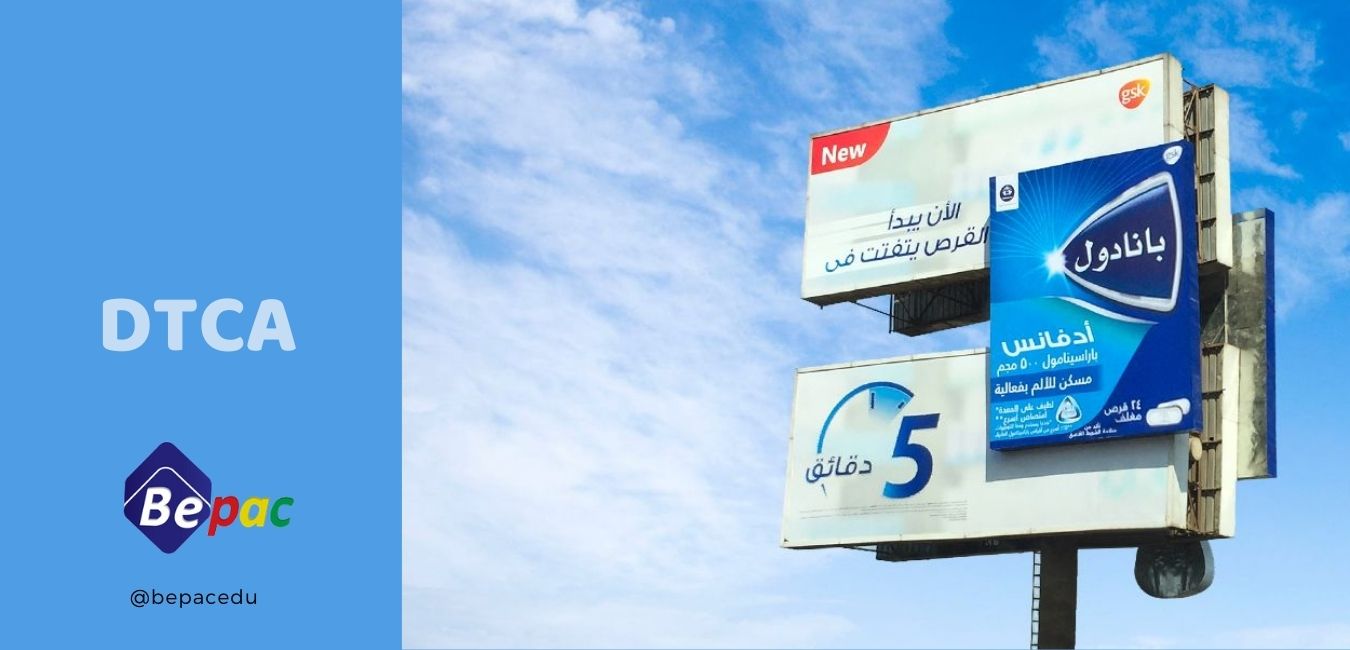
عبارة عن ترويج شركات الأدوية لمنتجاتها الدوائية للمريض مباشرة . أى هو الإعلان المباشر للمريض من مسوقى شركات الأدوية
منظمة الغذاء والدواء
FDA
هى المسئولة عن ذلك ولها عدة اشتراطات لترويج الدواء إلى المريض مباشرة وهى كالآت
ألا يكون هناك تضليل فى المعلومات للمرضى-
لابد أن تصف المعلومات مميزات وأضرار المنتجات بالتفصيل-
لابد من شرح تركيبة المنتجات بصورة مفصلة-
تختلف هذه السياسة من بلد الى اخرى
من أشهر البلاد التى تسمح بهذا النوع من التسويق الولايات المتحدة ونيوزيلاندا وأخيرا بدأت كندا فى السماح بذلك بيينما تقابل شركات الأدوية مشاكل كبيرة مع الاتحاد الاوربى فى ذلك
أنواع الإعلانات لشركات الأدوية
إعلانات تشرح للمريض معلومات عن الحالة الصحية والتشخيص وتنصحه بإستشارة الطبيبب وهذه الغالبية العظمى تقوم بعمل توعية للمريض عن المرض وكيفية إكتشافه (أدوية علاج البروستاتا وسرطان الثدى)
إعلانات تذكر إسم المنتج فقط وجرعته وسعره وأماكن توافره دون التحدث عن دواعى الإستعمال (إعلانات فياجرا الاصلية متوافرة الان بالصيدليات )
إعلانات تذكر إسم المنتج ودواعى الإستعمال والاُثار الجانبية وعوامل الأمان (إعلانات البنادول بجميع أنواعه)
كل نوع من هذه الأنواع له معايير وصلاحيات من منظمة الأغذية والأدوية
أنواع وسائل الإعلان المستخدمة
التليفزيون
المجلات
الإنترنت
إعلانات الطرق
الفلاير المطبوع فى عيادات الأطباء والمستشفيات
يلاقى الإنترنت ووسائل التواصل الإجتماعى قبولا كبيرآ من مسوقى شركات الأدوية كما بدأت الشركات فى إستخدام الموبايل أبلكيشن ومحركات البحث
DTCA (Direct To Consumer Advertising) can be defined as an effort (usually via popular media) made by a pharmaceutical company to promote its prescription products directly to patients. The FDA’s Division of Drug Marketing, Advertising, and Communications (DDMAC) is responsible for the regulation of DTCA. In 1969, FDA issued final regulations for prescription drug advertising, which mentioned that these ads must:- Not be false or misleading information.
- Present a “fair balance” of information describing both the risks and benefits of a drug.
- Include facts that are “material” to the product’s advertised uses.
- Include a “brief summary” that mentions every risk described in the product’s labeling See less
Types of DTCA advertisements
1- The “help-seeking ad,” which provides only information about a medical condition and encourages patients to contact their physician but doesn’t mention a product. 2- The “reminder ad,” which includes the product name; this type may provide information about strength, dosage form, or price, but it doesn’t mention the indication or make any claims 3- The “product claim ad,” which mentions the product and its indication and includes efficacy or safety claims. Each category of ads is subject to different FDA regulatory restrictionsDTCA (Direct To Consumer Advertising) Media:
Television, print (magazines, newspapers), radio, the Internet, and other forms of mass media (billboards and direct mailings).- Promotional brochures that are supplied to health care professionals to distribute to patients can also be considered DTCA, even though they aren’t provided directly to the consumer by the manufacturer.
- Many marketers are also beginning to recognize the enormous potential of online DTCA, which reaches millions of potential consumers globally.

